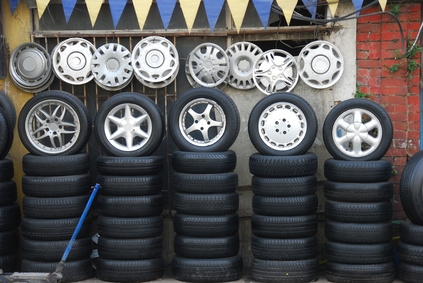
The dangers of driving in winter simply can't be understated. Virtually every element of driving danger is compounded when the winter season rolls around. While rim selection is not always on the top of everyone's winter readiness list, the proper rim selection for winter can make a difference. Essentially, your choice boils down to choosing between pure steel or alloy rims.
Steel rims are hands down the cheaper option. They are less glamorous, made of simpler components, and are more functional than fashionable. This may play to your advantage in winter driving as many hazards exist on the road that could damage your rims and by purchasing a cheaper steel rim it will be less money to replace versus an expensive alloy rim. In addition, the structural integrity of a steel rim is just as solid as with an alloy rim so for proper function and safety a steel rim will be perfectly adequate.
Alloy wheels are made of a composite of metals and are can be built to the exact specifications of a car. Some new cars with la ow amount of clearance between the tire and the wheel well need a specific rim size to be able to fit chains and/or snow tires. In this situation, an alloy rim will be your only option. In addition, the lighter metals in an alloy rim make the rim lighter and therefore have more performance which can be beneficial in winter. Also, alloy rims enhance the appearance of your car, and if you have accounted for safety, a nice set of rims can show off your car nicely in the winter.
Alloy wheels often have a delicate finish and are more susceptible to damage in the harsh elements of winter. A simple rock can chip a piece off the rim and render it useless. As alloy wheels are significantly more expensive, they can be risky to use in the winter. Steel wheels are heavier and in rare cases may offer less than optimal performance due to their enhanced weight. In addition, the compositions of steel wheels makes them harder to fit on cars that need a certain amount of brake clearance, for example, where alloy wheels can be built to specific dimensions.